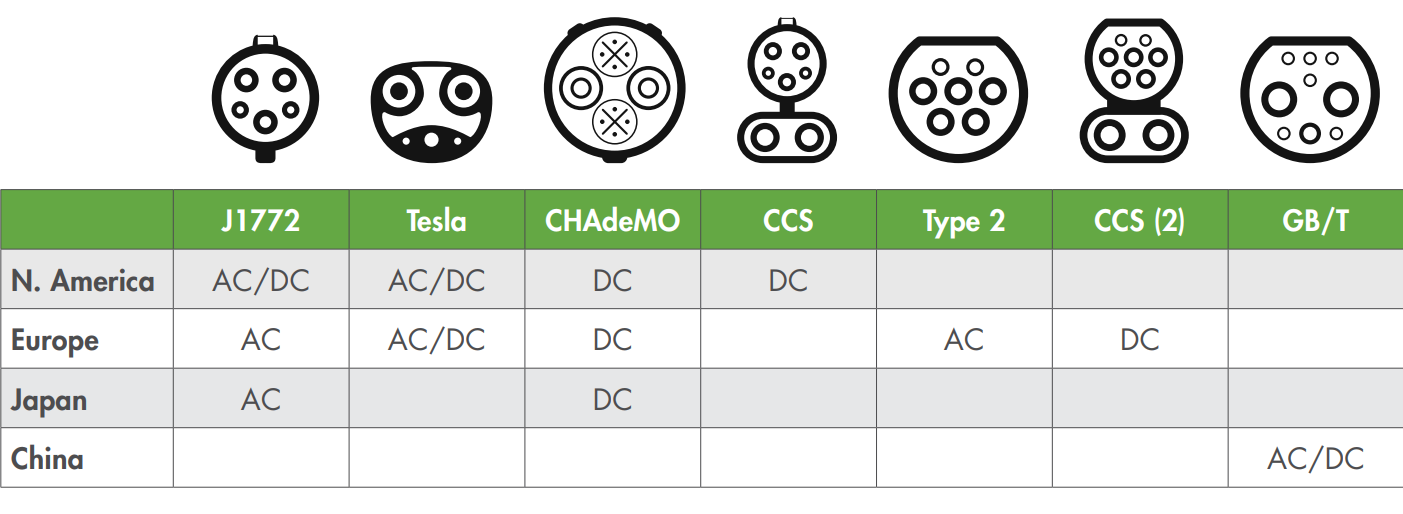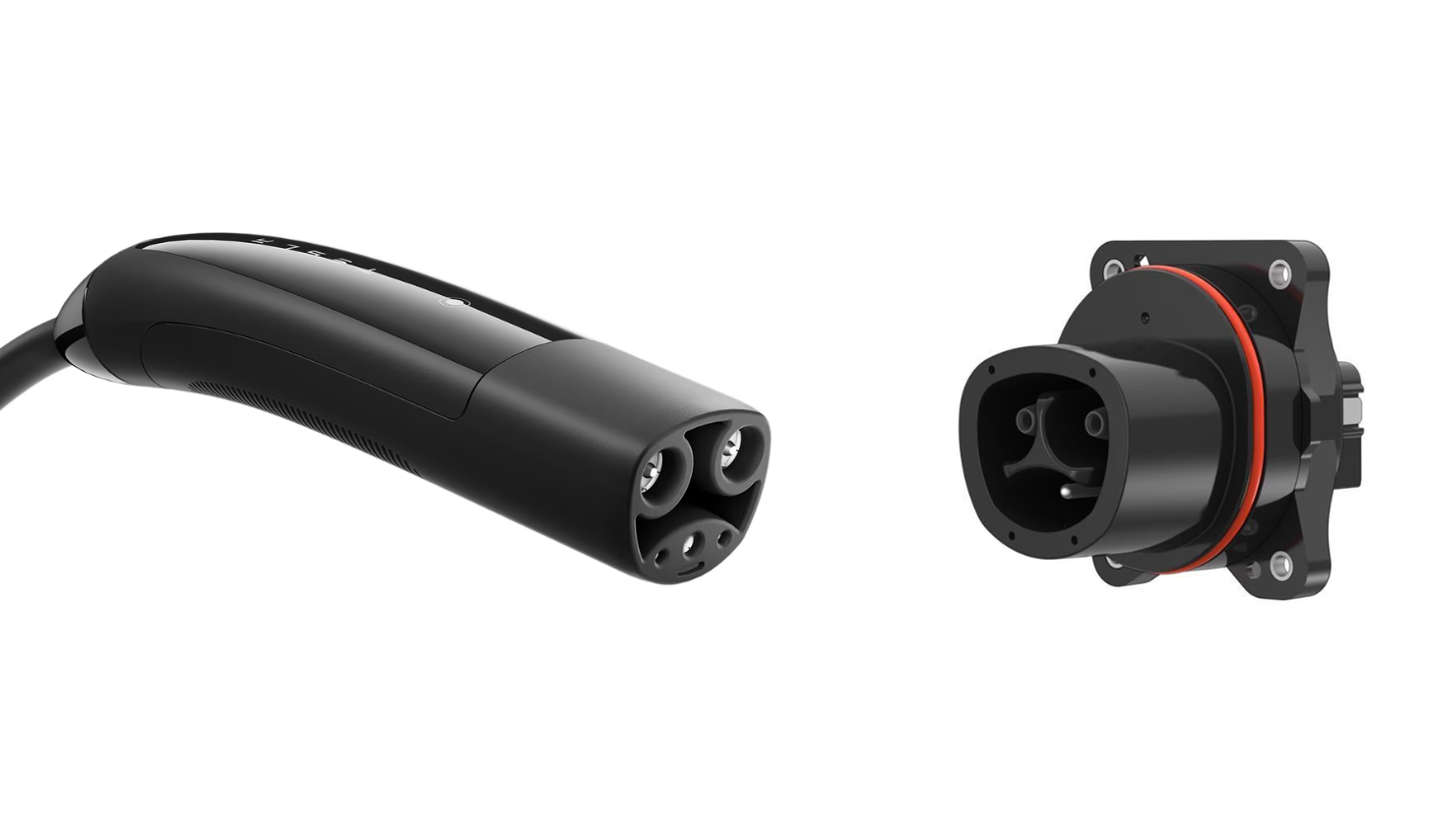In the race to a sustainable future, every decision we make matters. As we’ve discussed in previous articles, transitioning our world to sustainable energy is a priority. We’re making progress, but we need to ensure every decision aligns with this mission. We need to put Earth first.
Road transportation accounts for a significant portion of greenhouse gas emissions in the EU. Converting our internal combustion engine (ICE) vehicle fleet to electric vehicles (EVs) is a crucial step. Our EV fleet is growing, which is promising. However, we face several challenges, one of which is the lack of standardization in charging ports and connectors used by automakers. This lack of uniformity leads to several difficulties.
 Photo Source: European Commission
Photo Source: European Commission
Incompatibility — There are several different types of charging connectors used by different EV manufacturers.
Lack of simplicity (Adapters Required) — To overcome the issue of incompatibility, EV owners may need to use adapters. These can be costly, and not all charging stations support their use.
Different charging speeds — Different connectors often support different charging speeds. For instance in the picture above, a CHAdeMO connector (plug) might support fast charging, while a Type 2 connector might only support slow or moderate charging. This can affect how quickly an EV can be recharged.
Too many standards — They are too many differences in charging standards between countries.
The current landscape of EV recharging connectors is a patchwork of varying standards across geographies and models. This lack of uniformity is a significant barrier to the widespread adoption of EVs. The fear of incompatibility between a vehicle and a charging point can deter potential EV buyers. We believe the adoption of a single charging standard can alleviate these fears and make the EV experience easier for users.
But, there is hope.
Last week, Ford Motor Company reached an agreement with the North American Company Tesla that will provide their EV customers access to more than 12,000 Tesla Superchargers across the U.S and Canada, effectively doubling the number of fast-chargers available to Ford customers.
Coming soon: More locations to charge your Ford® electric vehicle. Thousands of them. @Tesla https://t.co/FayrARjD3s pic.twitter.com/CtDEcqvdwu
— Ford Motor Company (@Ford) May 25, 2023
Ford will equip future Electric Vehicles with the North American Charging Standard (NACS) charge port, removing the need for an adapter for direct access to Tesla Superchargers, starting in 2025.
Similarly, days after Ford’s announcement, General Motors Company also confirmed its adoption of the NACS standard.
We're teaming up with @tesla to enhance your electric vehicle experience. More charging stations, less range anxiety, more sustainable journeys. It's about your convenience, not our competition. #EverybodyIn pic.twitter.com/D4joovLjPh
— General Motors (@GM) June 8, 2023
What is the NACS standard?
North American Charging Standard (NACS) is currently the most common charging standard in North America, with NACS vehicles outnumbering Combined Charging System (CCS) vehicles two-to-one. Furthermore, according to Tesla, the NACS connector is the most proven in North America. It offers AC charging and up to 1 Megawatt DC charging in a slim and compact package, half the size of the CCS connectors. In November last year, Tesla, the software and electric vehicle (EV) technology pioneer, opened its North American Charging Standard (NACS) to the world.
 Photo Source: Tesla, pipelineonline
Photo Source: Tesla, pipelineonline
This move invites charging network operators and vehicle manufacturers to adopt the Tesla charging connector and charge port, now known as NACS, on their equipment and vehicles.
But why NACS?
Tesla’s Supercharging network boasts 60% more NACS posts than all the CCS-equipped networks combined, NACS connector is a unified connector for AC and DC recharging, supporting all voltage levels. Its adoption by major automakers is a testament to its superiority over other charging systems. The NACS connector also supports communication between the vehicle and the charging equipment, allowing for smart charging features such as scheduled charging and dynamic power adjustment based on grid conditions. This communication capability is crucial for integrating EVs into the smart grid and managing the increased electricity demand that widespread EV adoption will bring.
We recommend you to watch the following episode of Munro Live, which outlined the advantages of the NACS charging standard over the CCS Combo 1 (CCS1) aka SAE J1772 Combo.
While the NACS is undoubtedly a great charging standard, the Combined Charging System (CCS) has also a solid backing with nearly 300 domestic and international CharIN members using or investing in it, including major automakers like Audi, BMW, Daimler, and more.
However, with the growing influence of the NACS and Tesla’s substantial charging network, we believe the adoption of NACS by European car companies could prove beneficial in the long run. A European version of the standard, the European Charging Standard? (ECS), could unify the fragmented charging landscape, thus accelerating EV adoption and reducing consumer confusion.
Of course, this vision is not without its challenges. Yet, as with every great endeavor, the rewards could be transformative. With the adoption of a universal charging standard such as the NACS, the future of EV charging could be defined by unity and simplicity. Instead of worrying about adapters or compatibility, drivers will only need to know about one connector, eliminating a significant barrier to EV adoption.
The transition to a sustainable future demands bold steps, and the adoption of a uniform standard is a step worth considering. The recent moves by Ford and General Motors to adopt NACS, coupled with Tesla’s decision to open its charging standard to the world, are promising signs of a shift towards a unified charging standard. We hope other manufacturers and charging network operators will follow suit. This is our opportunity to harmonize the world’s charging networks, streamlining the adoption of electric vehicles, and moving us closer to a future where sustainable energy is not just an alternative, but the norm.